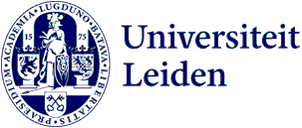
How superconducting memory could help data centres reduce their carbon footprint
Listening to music on Spotify or watching Netflix or YouTube: few of us realise that CO2 is released in the process. This is because online services are stored on servers in data centres, and they guzzle energy. Physicist Remko Fermin researched methods to make the memory in data centres more energy efficient.
At the moment data centres use 1 per cent per cent of the total energy consumed in the world, making them responsible for around 0.3 per cent of total CO2 emissions. Information and Communications Technology (ICT) as a whole (this includes personal digital devices, televisions and mobile networks) generates more than 2 per cent of global emissions. This puts the carbon footprint of ICT at the same level as that of the aviation industry. The worst-case scenario predictions are that data centres will account for 10 per cent of global energy consumption by 2030.
Fermin was shocked to discover these figures and wanted to help save energy. He looked to physics to develop methods that could help make the computers in data centres more energy efficient. ‘Imagine we can avoid that 10 per cent; that’s an incredibly important goal.’
‘As a proof of concept we made a one bit superconducting memory element.’
Superconductors
One of the solutions he looked at is memory that would be suitable for superconducting computers. Superconductors are materials with no electrical resistance. This means it takes no energy to send electricity through them. The drawback is that superconductors only work at really cold temperatures: just above the absolute zero of -273 degrees Celsius. Fermin: ‘Cooling our PCs to that level isn’t an option but it would be for data centres. Despite the power required to cool the computers there, they would be more energy efficient if they were superconducting.’
Research has already been done into how superconductors can be used for calculations. But much less research has been done into how a computer can store data with the aid of superconductivity. Fermin and his colleagues succeeded in making a superconducting memory element. ‘As proof of concept we made a memory element consisting of a single bit. This shows that it is possible to make a superconducting memory element by combining a superconductor and a magnet.’
Criteria
A successful superconducting memory element must meet four criteria. First it must be able to switch between two states, just like how a bit in a computer can have the value 0 or 1. Lots of bits together form a code that can be translated into a text, photo or video, for example. Second it should take very little energy to read and switch between the two states. Third the memory element must retain its memory as the computer heats up and is no longer superconducting. Fourth it must be scalable because we need lots of bits if we are to store all those films and music.

Superconducting memory elements had already been developed before Fermin’s research but none met all four criteria. Fermin can tick off at least three. By playing with the shape of the memory element, he has managed to create two states in the magnet (see figure 1). To ensure that it takes little energy to read the state of the element, he stacked a superconductor on a magnet (see figure 2). A groove in the superconducting part of the ellipse ensures the current is conducted through the magnet. As a result, a superconducting current can determine the magnet’s state. In other words, a current that consumes no energy reads the memory element.

Scalable
The only criterion that remains is scalability. Fermin: ‘The ellipse we made is 1,500 nanometres long. That is less than a tenth of the thickness of a human hair. Yet that is relatively big if you compare it with the transistor (electronic switch that can allow or prevent electricity from passing, ed.) in a phone, for example. That’s around a thousand times smaller. We can make our element smaller but more research is needed to see if it actually works in practice, so we can carry on watching YouTube in the future without feeling guilty.’
The journal article by Fermin et al: Mesoscopic superconducting memory based on bistable magnetic textures
Text: Dagmar Aarts
Images in text: Remko Fermin
